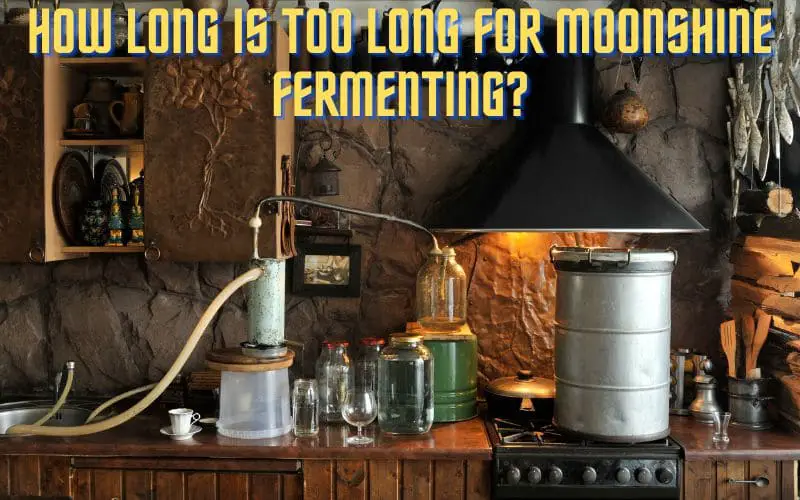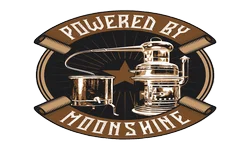How Long Is Too Long For Moonshine Fermenting?

Answer to the Question
Moonshine fermenting typically lasts for about one to two weeks, although the exact duration can vary depending on various factors such as temperature, yeast activity, and the initial sugar content of the mash. During fermentation, yeast converts sugars into alcohol and carbon dioxide. If left too long, beyond the two-week mark, several issues can arise. Firstly, prolonged fermentation can lead to the development of off-flavors due to the accumulation of undesirable byproducts. Additionally, the risk of contamination increases, potentially leading to spoilage and a lower-quality final product. Moreover, extended fermentation may result in a higher alcohol content, surpassing the desired potency and potentially making the moonshine harsher or more difficult to drink. Thus, while a certain degree of patience is necessary for fermentation to complete, monitoring the process and ensuring it does not exceed the optimal timeframe is crucial for producing a high-quality moonshine.
Supporting Information
Factors Affecting Fermentation Time
When it comes to the fermentation time of moonshine, there are a multitude of key factors that play a significant role in influencing the process. These factors encompass various elements such as the composition of the mash, the quality and strain of the yeast utilized, and the prevailing ambient temperature. It’s important to delve into the specifics of each factor to truly comprehend their individual impact on the fermentation duration. For instance, the type of sugar employed in the mash and the pH level of the mixture are paramount considerations that can distinctly contribute to the speed and efficiency of the fermentation process. Exploring and understanding these factors in depth is crucial for effectively controlling and optimizing the fermentation time of moonshine.
Types of Moonshine and Fermentation Time
When it comes to the fascinating world of moonshine, there are various types that each possess unique fermentation characteristics. These types include corn whiskey, sugar shine, and fruit-based spirits, all of which undergo a distinct fermentation process. The duration of fermentation is a crucial factor in the production of different moonshine variants. For instance, corn whiskey may require a longer fermentation period compared to sugar shine due to the complexities of the ingredients involved. Similarly, fruit-based spirits, with their natural sugars and flavors, demand a fermentation timeline that allows for the extraction of their distinct aromas and tastes.
The rich and diverse array of flavors and aromas found in moonshine can be directly attributed to the fermentation duration and the specific ingredients utilized in the process. Corn whiskey, characterized by its robust and earthy notes, develops these qualities through a meticulous fermentation period, whereas sugar shine, known for its sweetness, undergoes a different fermentation journey to enhance its flavor profile. Additionally, fruit-based spirits—be it apple, peach, or other fruity variations—require a tailored fermentation process to capture their individual fruity characteristics and essence.
Monitoring Fermentation Progress
Monitoring the fermentation progress is a critical aspect of achieving the desired quality and flavor profile in moonshine. The use of hydrometers, temperature measurement, and sensory evaluation are key methods for assessing the progress of fermentation. By closely monitoring the fermentation process, distillers can make informed decisions regarding the optimal duration for fermenting moonshine.
- Use a Thermometer: Invest in a reliable thermometer specifically designed for fermentation purposes to accurately measure the temperature of your fermenting mash or liquid. Digital thermometers with probes are often the most convenient and accurate option.
- Regular Monitoring: Check the temperature of the fermentation vessel regularly, ideally multiple times per day, to ensure that it remains within the optimal range for yeast activity. Temperature fluctuations can occur, especially in environments with variable ambient temperatures.
- Maintain Consistency: Keep the fermentation vessel in a location where the temperature remains relatively stable throughout the fermentation process. Avoid placing it in direct sunlight or near sources of heat that could cause temperature spikes.
- Adjust as Needed: If the temperature deviates from the optimal range for fermentation, take corrective action promptly. Methods for adjusting temperature may include relocating the fermenting vessel to a cooler or warmer area, using insulation or a heat source, or adjusting the ambient temperature of the fermentation space. Regular monitoring allows you to make timely adjustments to maintain optimal fermentation conditions.
Conclusion
As we conclude our exploration of moonshine fermentation time, it becomes clear that the duration of fermenting moonshine is influenced by a myriad of factors. From the type of moonshine to the quality of ingredients and the meticulous monitoring of fermentation progress, every aspect plays a vital role in determining the ideal fermentation time. By gaining a deeper understanding of these factors, home distillers and enthusiasts can harness the art and science of moonshine fermentation to create spirits that captivate the senses and leave a lasting impression.
